Long Weekend in Charleston, South Carolina
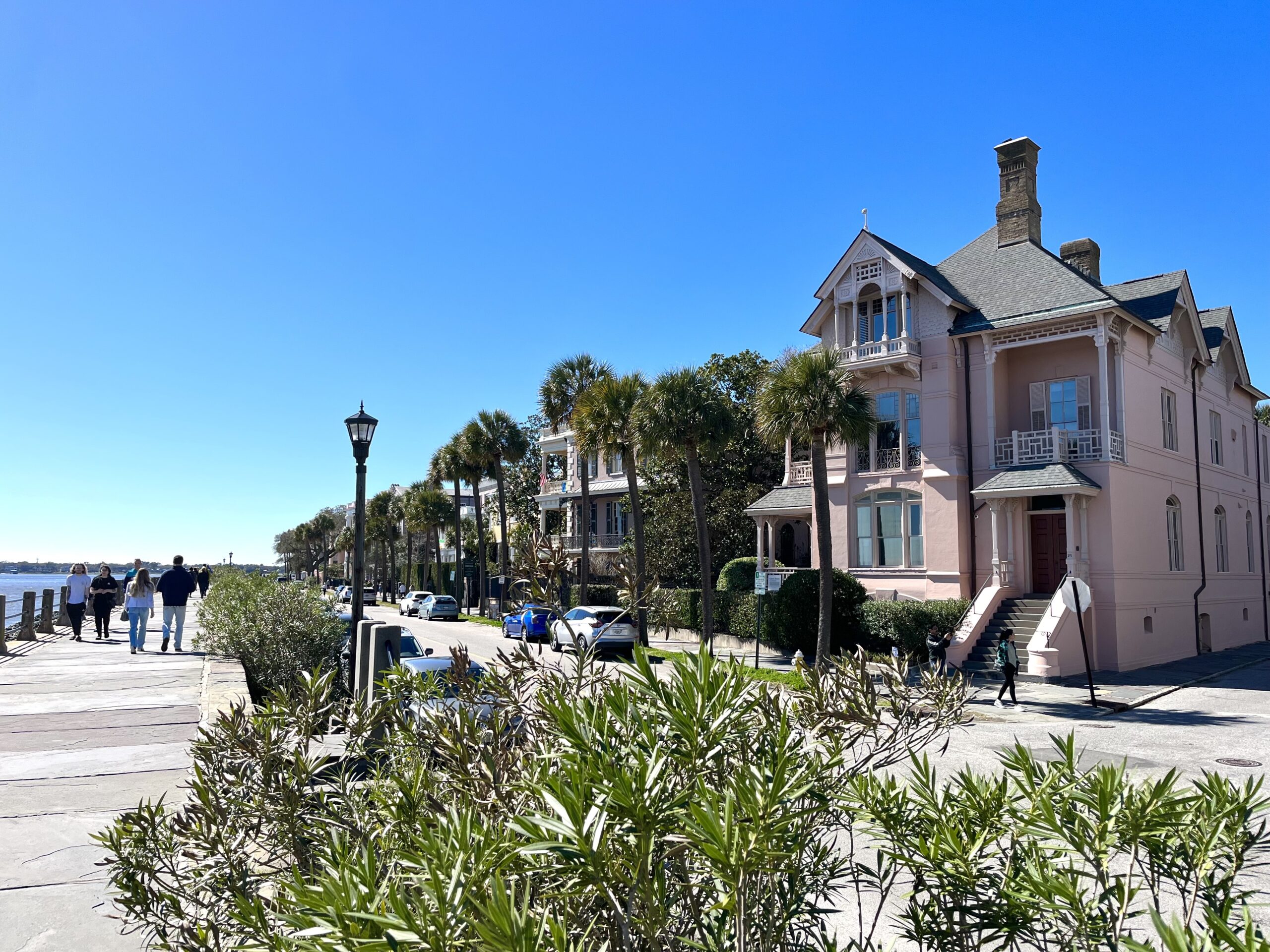
It’s been a goal of mine to explore the South since I moved back to the U.S.! The more I’ve traveled the world the more I’ve realized the U.S. is almost like a series of countries within a country. Each region let alone state is unique, with various characters, culture, food, and mentality. In particular, Charleston South Carolina has been top of the list for me given its charm, Southern hospitality, and rich history dating back to 1670 and colonial times. A tradition I’ve been cherishing for a while now is taking a long weekend trip somewhere interesting for my birthday. So, that’s what we did again!
We traveled to Charleston in my birthday month of February, which meant the weather was beautiful compared to what we’re used to for the time of the year in Washington D.C. For much of the weekend the weather was sunny, bright, and it already felt like spring – daffodils, tulips, poppies, and flowering trees like magnolia were already in bloom! I can only imagine how sweltering it must be in the summer – so my suggestion would actually be to avoid the summer heat (and humidity) and go either in the spring or the fall. Winter should also be fine as weather year round tends to be mild.
Background
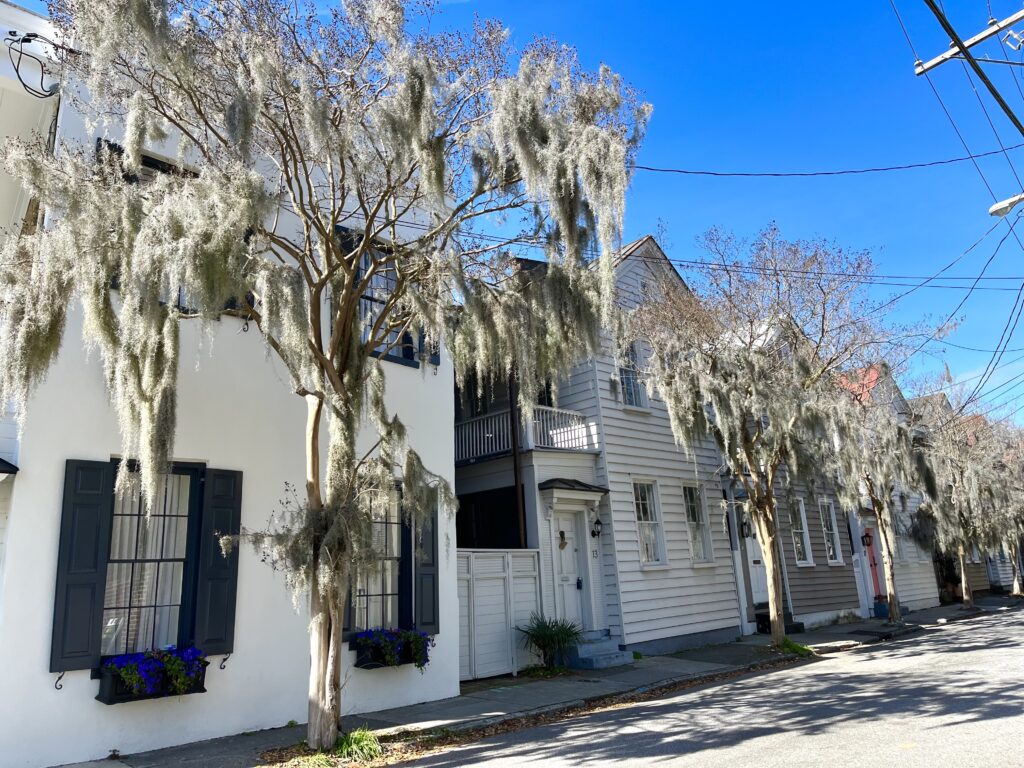
Since Charleston is a small city, with the historic center being very walkable, a long weekend is the perfect amount of time to spend here. Before heading into the the meat of what to do in this quaint city, let’s steep a bit into the history. Part of the charm of visiting Charleston is marveling at the important role the city has played in U.S. history from colonial times to the Revolutionary and Civil Wars! This makes visiting this place feel all the more special.
The history of Charleston dates back all the way to 1670 when over a hundred English colonists, indentured servants, and slaves landed in the harbor. This is when the colony of Carolina came to be and as you can imagine, the city was named after King Charles II (“Charles Town”). Apparently the city is the first U.S.’ first to be built in a grid-like format as opposed to the meandering European streets. Not surprisingly, due to its strategic location by the water, Charleston became an important seaport for trade – goods including skins, indigo, rice, and cotton were the main export goods, which were sent back to England. With bustling trade, the city quickly became known as “Little London.”
Charleston plays an important role during the Civil War when South Carolina became the first state to secede from the Union in 1860. In fact, the Civil War officially began when Confederate troops shot cannons at Fort Sumter, which you can visit to this day! Charleston quickly became a key target for the federal troops to try and overtake. I highly suggest visiting Fort Sumter (for more historical background), which is a short ferry ride away and can be seen in just a few a hours. Just be sure to purchase a ticket in advance! The historic nature of this beautiful city can be felt everywhere and anyone from someone who just appreciates Southern charm to a history buff can appreciate being here!
What to do in Charleston
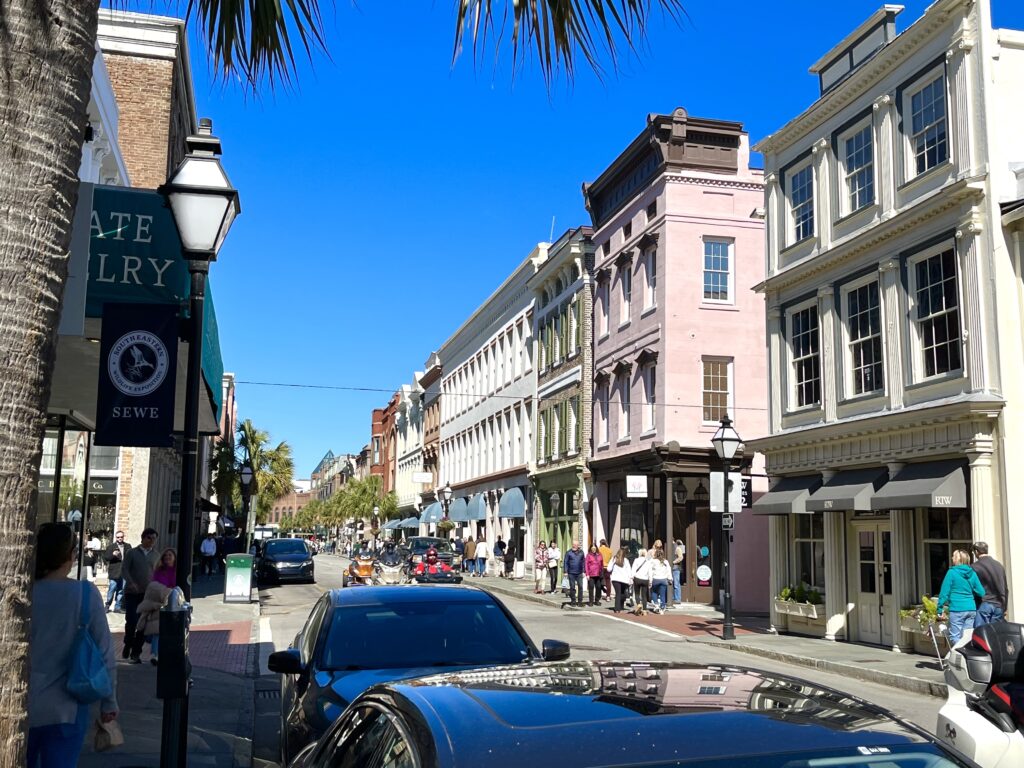
King Street
The best way to begin to get to know a city, I believe, is to meander the city center and get a little lost! good thing Charleston is relatively small so there are a few streets so you’ll get your bearings and will begin to recognize them. The main artery of the place is King’s Street (they also have a Princess Street that runs perpendicular, which is so adorable!) where you can enjoy some shopping. What I love in particular, are the local boutique shops on the street selling anything from locally made honey and mead to leather goods, spices, handmade candles, pajamas and prints in beautiful blue and white nautical themes. Lots of great places to purchase souvenirs that are not kitschy. Some stores I personally really like include Candlefish, Buxton Books, Savannah Bee Company, and Clayton & Crume.
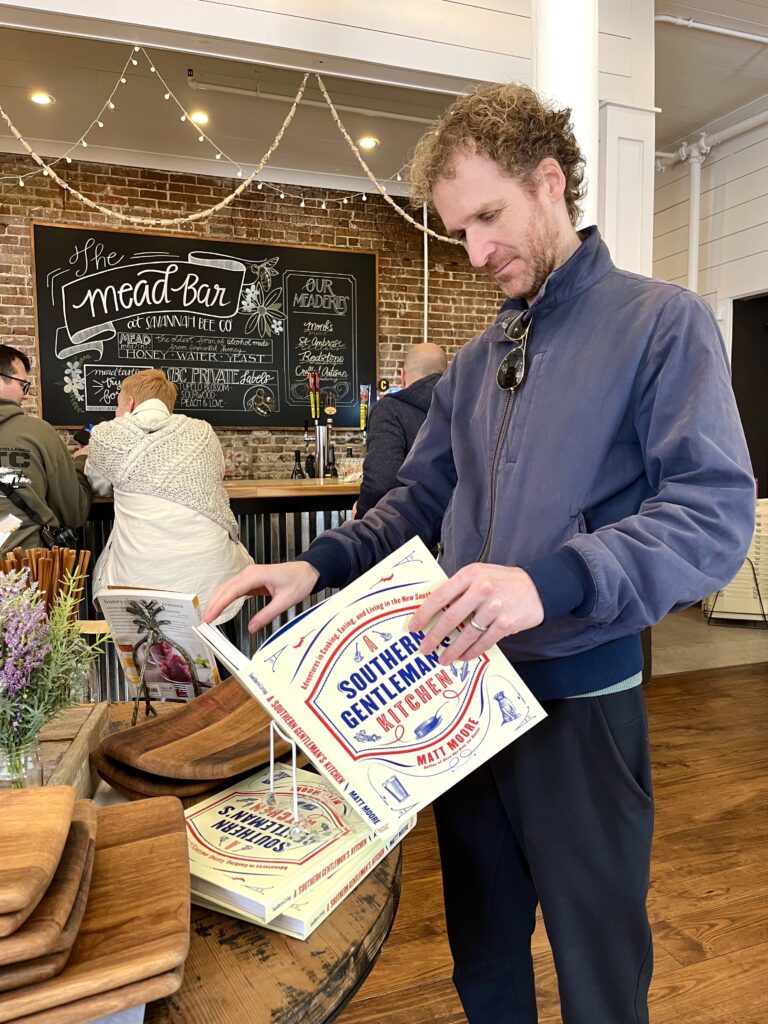
Charleston City Market
After walking just off of King Street, you’ll come across the Charleston City Market, which has been around for 200 years with parts of it indoors and others outdoors (though covered with a roof). There are a lot of stalls inside selling all sorts of things! I didn’t end up buying anything but was tempted particularly by the spice mixes, pickles, and condiments sold there that can really only be found in the South. The cuisine in this city is notoriously good! So if you’re a gourmand who likes to cook, this is a good place to purchase things for your cucina. You can also find some art work, souvenirs, jewelry, ceramics, which reminded me of street fairs and what is often sold there. Also, another highlight, if you want to pick up something very unique to the area are baskets made of sweetgrass. They can be a beautiful centerpiece and decor for your home if you want to be reminded of your lovely time in Charleston!
Joey Riley Waterfront Park & The Pineapple Fountain
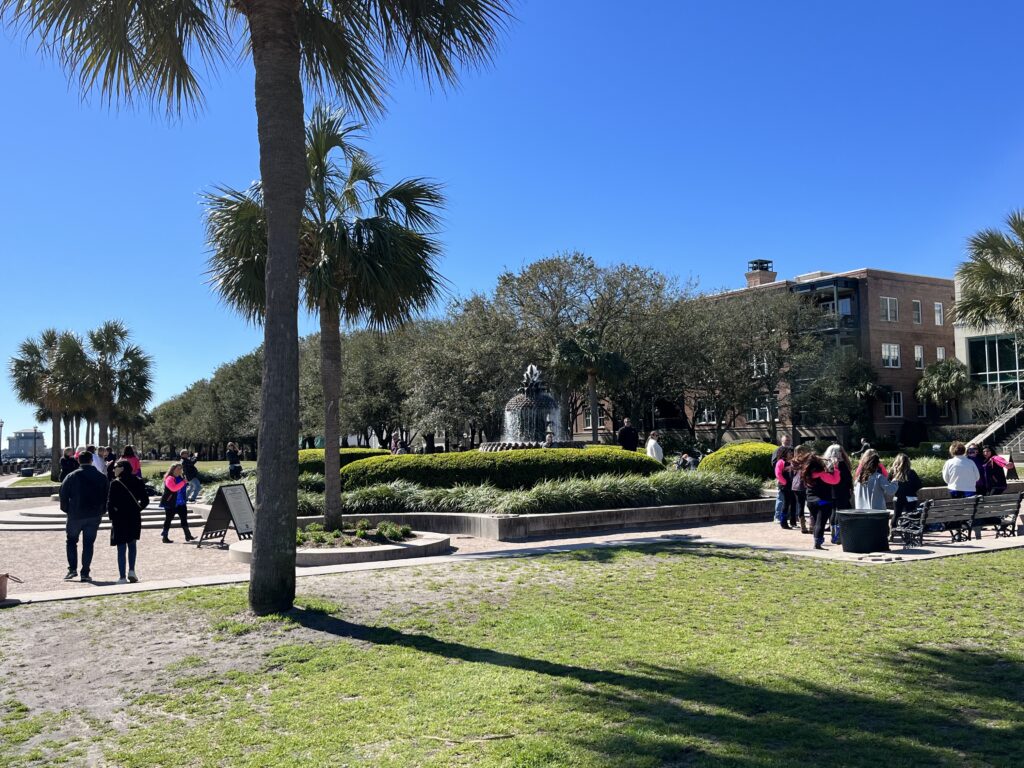
This is a great place to start to explore the waterfront area of Charleston, where there are a number of places to see! I recommend leaving this, the Pineapple Fountain, Rainbow Row, East Battery, White Point Gardens, and Legare for the second half of the day either before or after checking out King Street and Charleston City Market. In my itinerary, you can conveniently see the above sites in order for a nice stroll. The waterfront park specifically faces the ocean and is a great spot to hang out and people watch. Right before you walk into the park, there is a gelateria, Tinto y Crema, which I highly recommend. Feel free to get a scoop of something delicious (I got an incredibly convincing mojito flavor) and sit on a bench to soak in the sea!

The famous Pineapple Fountain also sits squarely in the park and is exactly what it sounds like, a fountain in the shape of a pineapple in all its glory. For some historic context, back in the day around the 18th century or so, pineapples were considered a delicacy and only accessible to the wealthy, who grew them in their greenhouses. If you were invited to a distinguished person’s home and were served pineapple it was considered a status symbol both in the U.S. and Europe! Charleston was built with a significant amount of wealth and large mansions remain standing throughout the residential areas – so you can easily imagine many of these families were able to afford to eat pineapples.
Rainbow Row
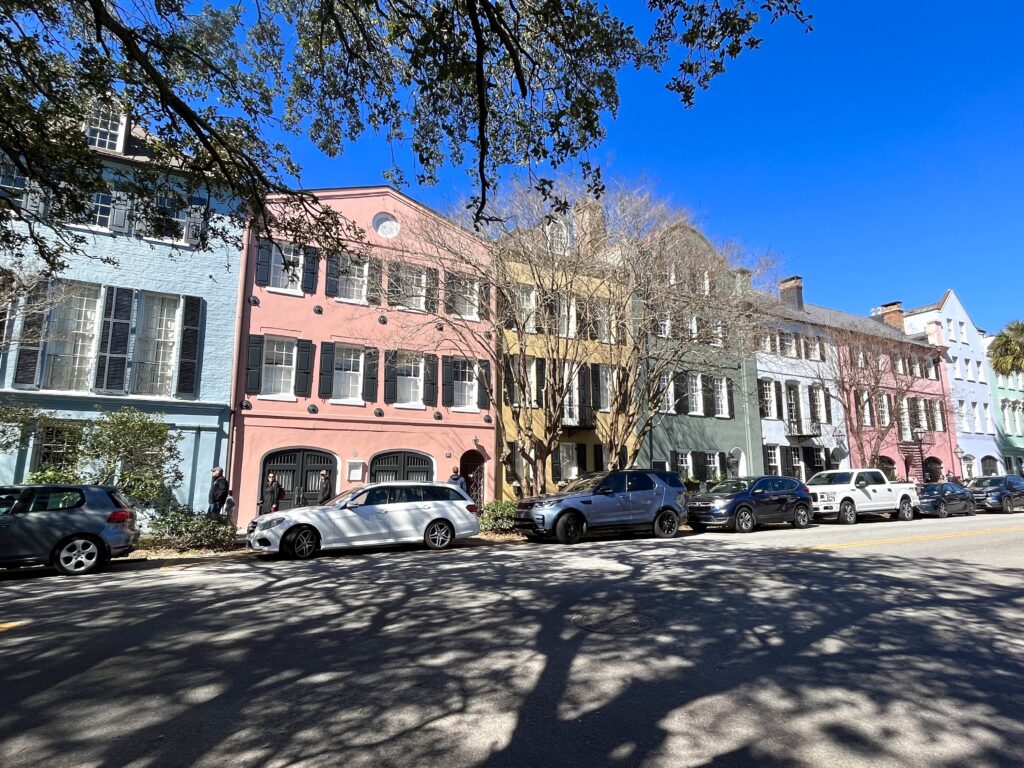
This street of houses, which date back to 1740, is probably one of the most iconic views in the city and one of the most photographed. What I love are the colorful, pastel colors of the buildings and that it remains a quiet, residential street. Much of these buildings are seemingly still locally owned and it doesn’t feel touristy (except for a smattering of visitors talking photos). I recommend looking at all the details, the old and unique windows of each home, the way some seem to slant slightly, etc. These homes used to belong to merchants during colonial times and were not colorfully painted. However, in 1931, they were painted in these appealing pastel shades. There are varying stories of why these houses were painted in such colorful colors – one being that it would help drunk sailors returning to their homes identify where they live and another being that the lighter shades keep the homes cooler under the hot sun. Either way, they are stunning and make you wonder what life would be like if you lived in one of these delicious homes!
East Battery
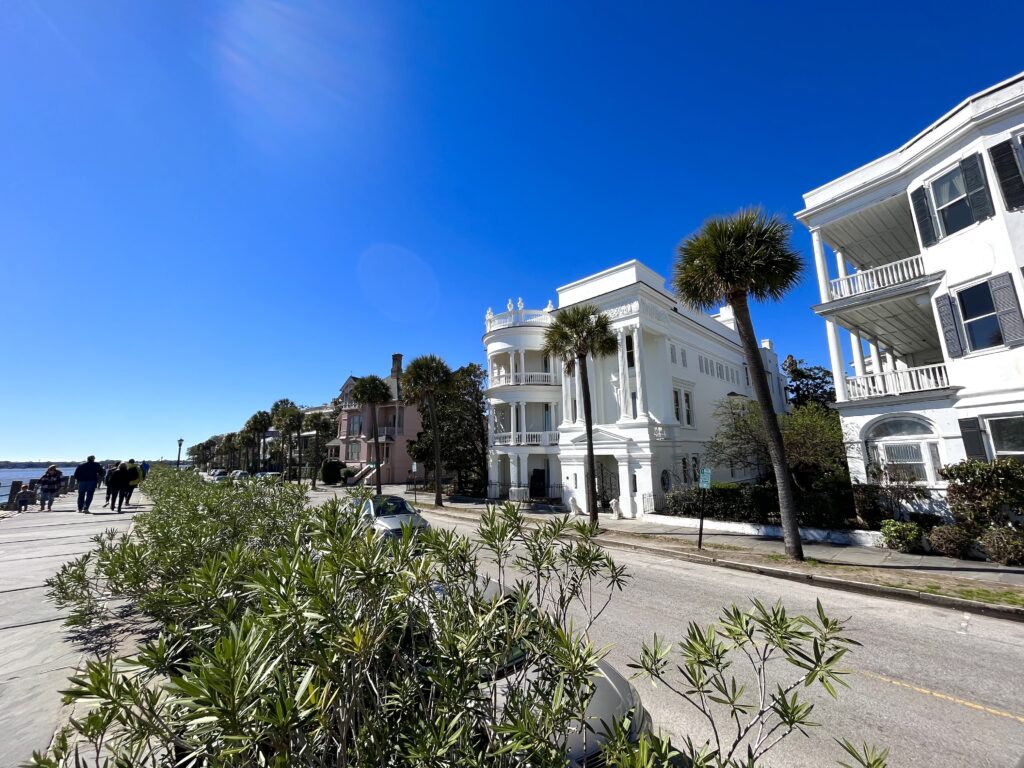
This neighborhood follows the waterfront and features gorgeous mansions along a boardwalk. These are massive homes and I noticed that several of them are in disrepair but of the ones that are maintained, they are in mint condition. In general, there seemed to be a number of mansions for sale – not sure if this is a remnant of the COVID pandemic or if Charleston is experiencing some brain drain. But if you’re extremely wealthy, this might be a nice city to purchase a large home! To that point, apparently Oprah has a home here!
The mansions by East Battery are all incredibly unique and also colorful making it so easy to play the game of which you like best. Architecturally, one of the things I’ve loved about Charleston mansions are the massive multi-tiered verandas (typically three or more levels), which are perfect for sitting on with a good book and some sweet tea. Apparently, these terraces had an important function of cooling the entire house – a cool breeze could waft through each of the floor levels. If I could design and build my own home, I’d certainly incorporate this feature in my forever home!
Aiken-Rhett House
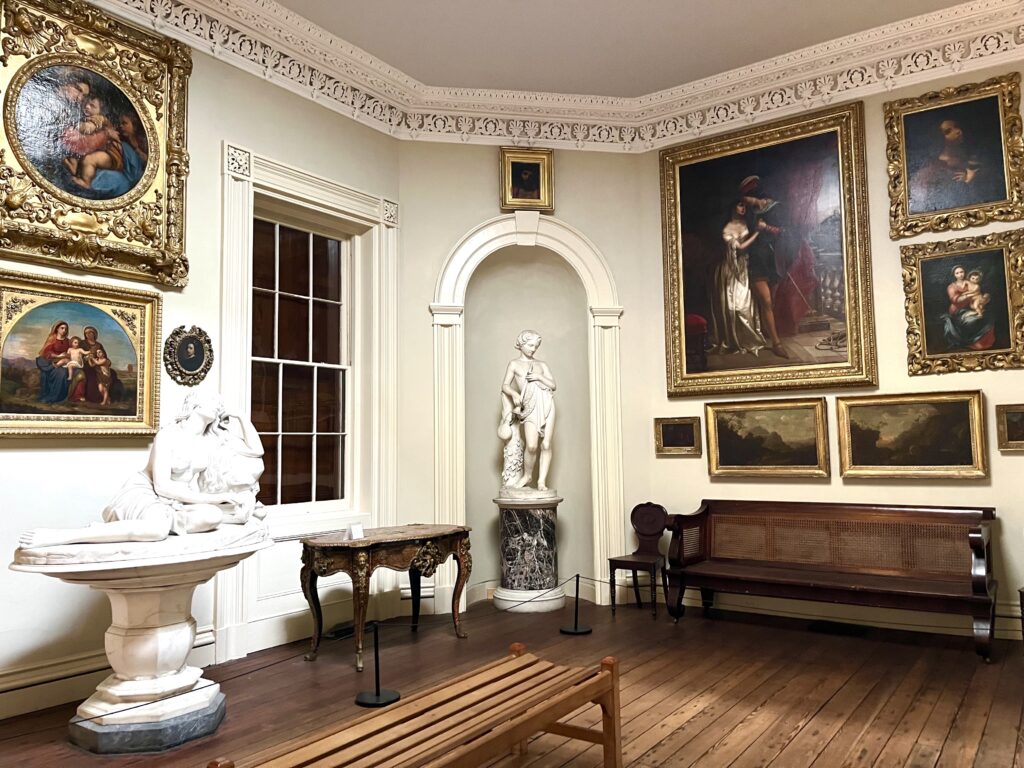
One thing that should definitely be on your list is visiting one of the great houses in Charleston! As you walk through East Battery and Legare Street you’ll noticed a whole lot of mansions, which used to be owned by Charleston’s landowners who built their wealth through their plantations. To understand the economic and social history of this city, visiting one of these homes that have been restored is a fantastic idea. Also, I recommend being mindful when selecting which to visit which of these homes highlight the lives and stories of those enslaved. Slavery formed the backbone of the wealth of these landowning families and the prosperous economy of the South so it is very important to make sure these narratives are interwoven in the places we visit.
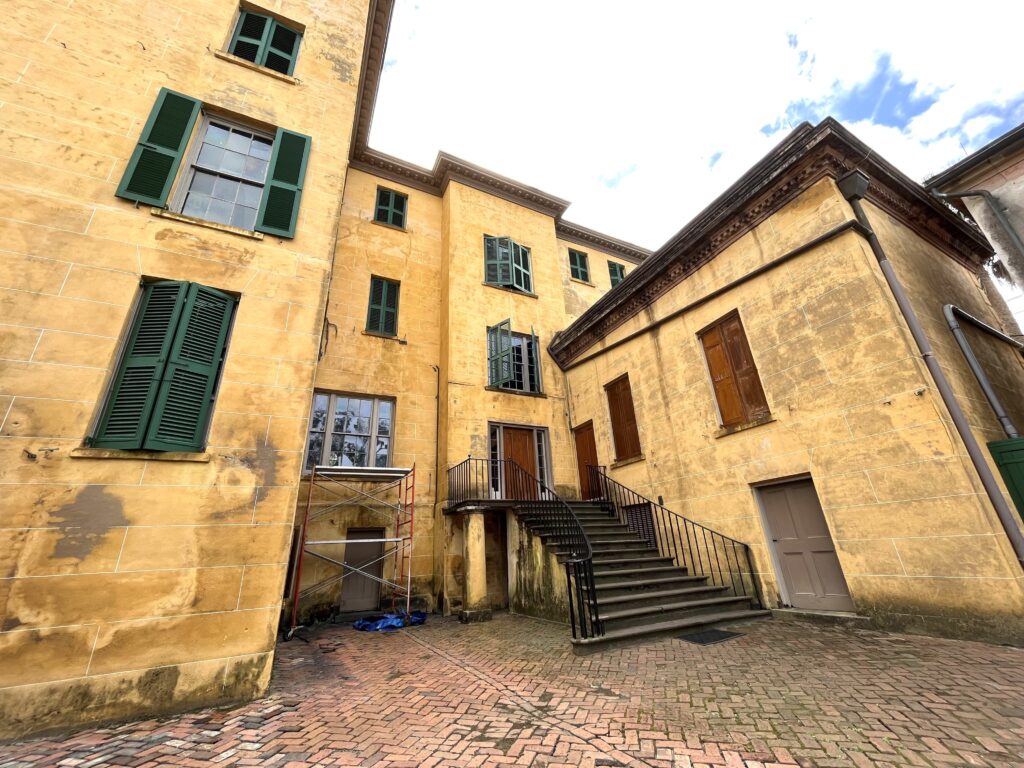
I absolutely recommend the Aiken-Rhett House in that it as meticulously preserved – yes, not restored but preserved. What is the difference you ask? The house is displayed in exactly the same way it has been all these years, which means no sprucing up to look something different from its authentic self. The audio guide provided was also excellent and easy to follow – definitely do not skip this! Like many other significant landowners, the family who lived here owned rice plantations off the coast of the Carolinas and built their second “town home” in Charleston to entertain society. The tour begins toward the back of the mansion with the slave quarters and highlights the names, lives, and stories of several folks who served the family. What I appreciated is how they took the time and intention to unearth these stories, which is not the case in many other establishments.
Magnolia Plantation
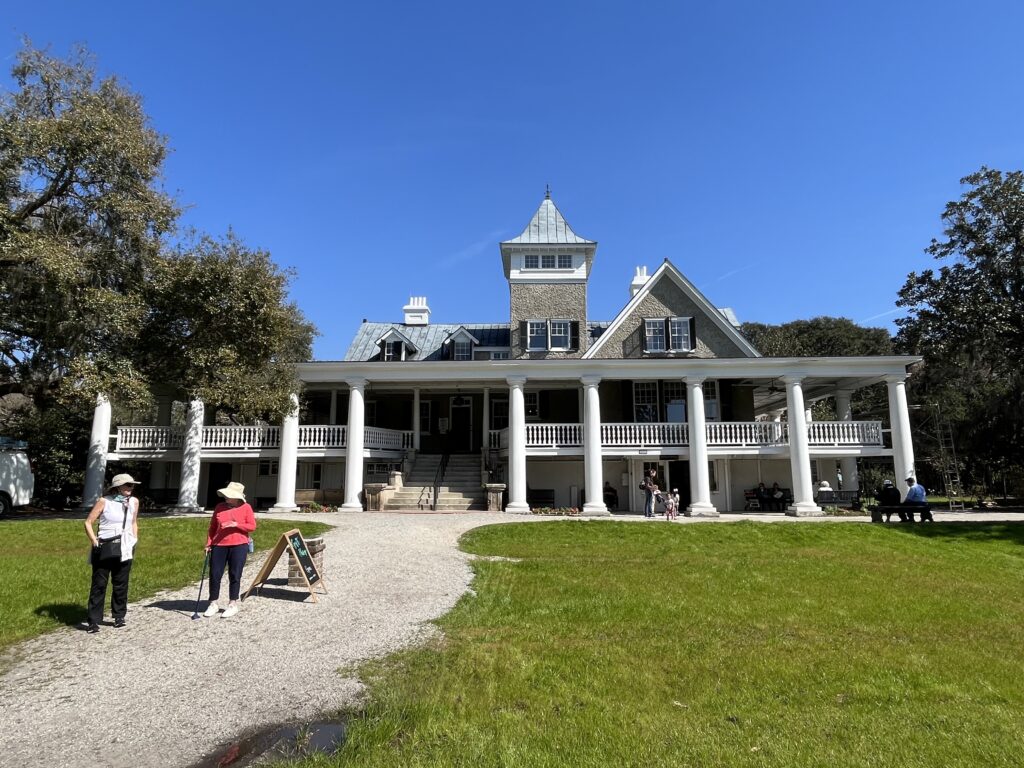
I’ve never visited a plantation in my life and this is something I’ve always wanted to do! Such a classic cornerstone of Southern history. There are a number of plantations near Charleston, with Magnolia being one of the closest ones (approximately half an hour away). This plantation is especially known for its extensive and sprawling gardens and you can purchase various different tickets, with the base entry being for the gardens. There is a beautiful main house to visit as well, which requires a separate, timed ticket but I highly recommend it.
Our guide for the house was probably one of the best I’ve ever had on any tour, and was extremely knowledgable, offering interesting tidbits of information, keeping it all interactive, and was also very humorous. Apparently, the Magnolia Plantation mansion was one of the only estates that were not burned down during the Civil War as the owner at the time did not enlist to fight under the Confederate flag. Also, two of the daughters of one of the plantation owners became abolitionists and were shunned in Charleston society! I also recommend adding a ticket to visit the slave quarters as well, which was actually free the time we visited, to get the full experience. Our guide for that tour was also very frank and offered the opportunity for Q&A, which I thought was very important for those of us who know less about the reality of slavery and its important role in the trajectory of US history.
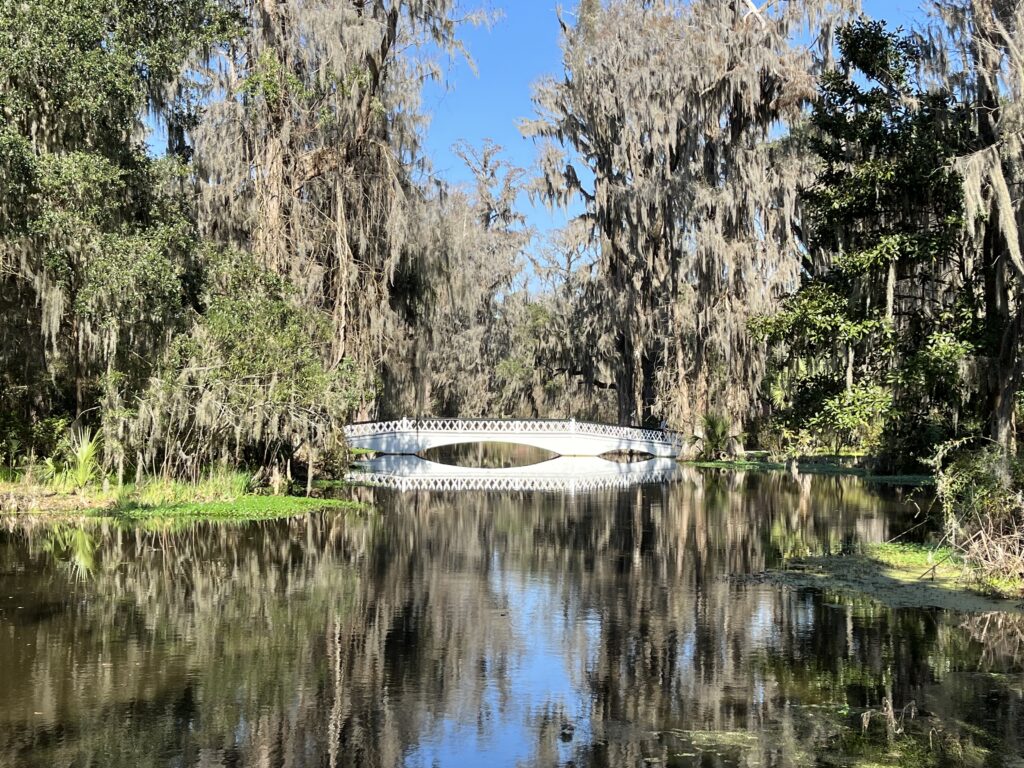
In many ways, my first visit to a plantation felt very humbling. Furthermore, seeing the extravagant and beautiful life that these landowners also enjoyed back in Charleston away from their plantations. To see the two, very different lives of master and slave was stark to say the least. There is so much we don’t read about in our history books growing up in the U.S. and I believe it is so important, especially as adults, to seek out more of these narratives to better understand who we are as a nation.
Conclusion
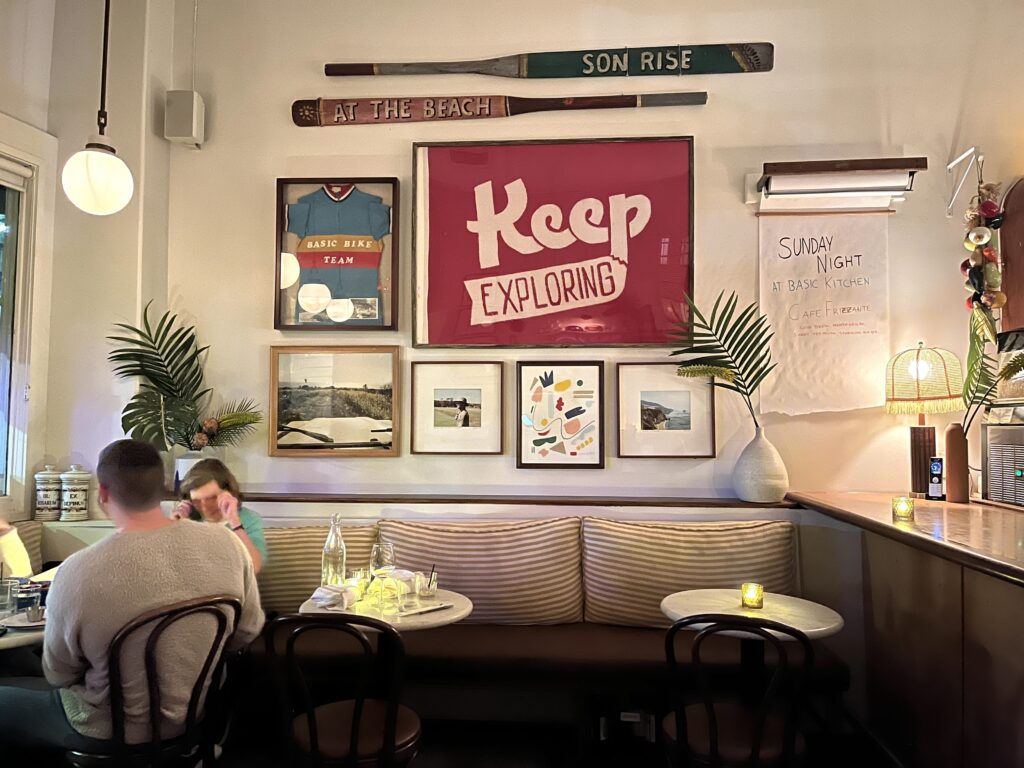
All in all, Charleston is a fascinating, historic city to visit! The wealth and consequence of this city is palpably felt the moment you walk around. Additionally, there is so much Southern charm here in the gorgeous architecture, the beautiful mansion homes that are still so well maintained, and the food is to write home about. There is something for everyone and if you’re looking to explore the South of the U.S., this is a great place to begin. The U.S. is such a massive country that there is just so much cultural and historic diversity worth exploring! Charleston is also the perfect place to spend checking out on a weekend, with it being on the smaller side but filled to the brim with culture, food, and history. You won’t regret checking this beautiful city out!
